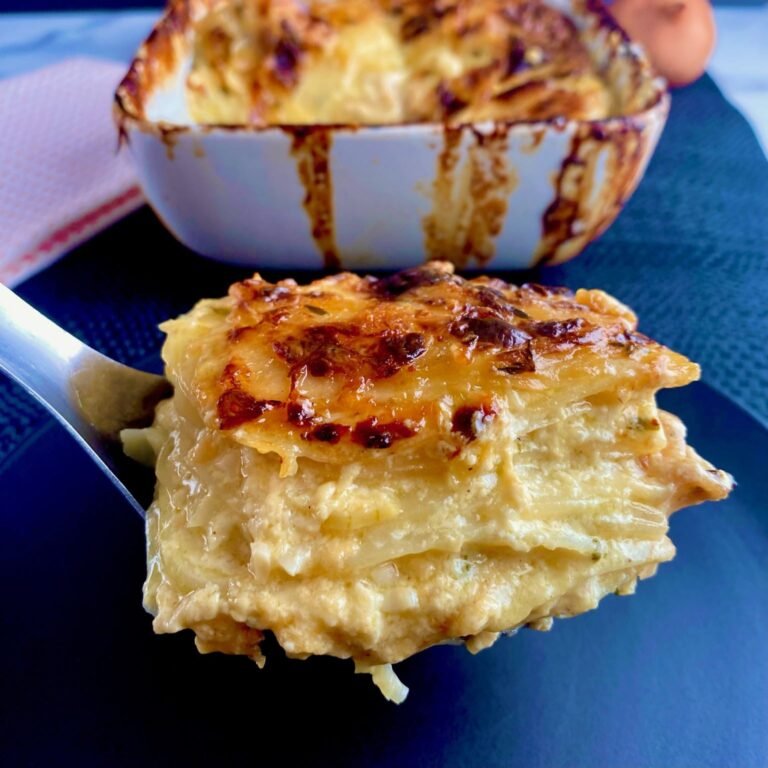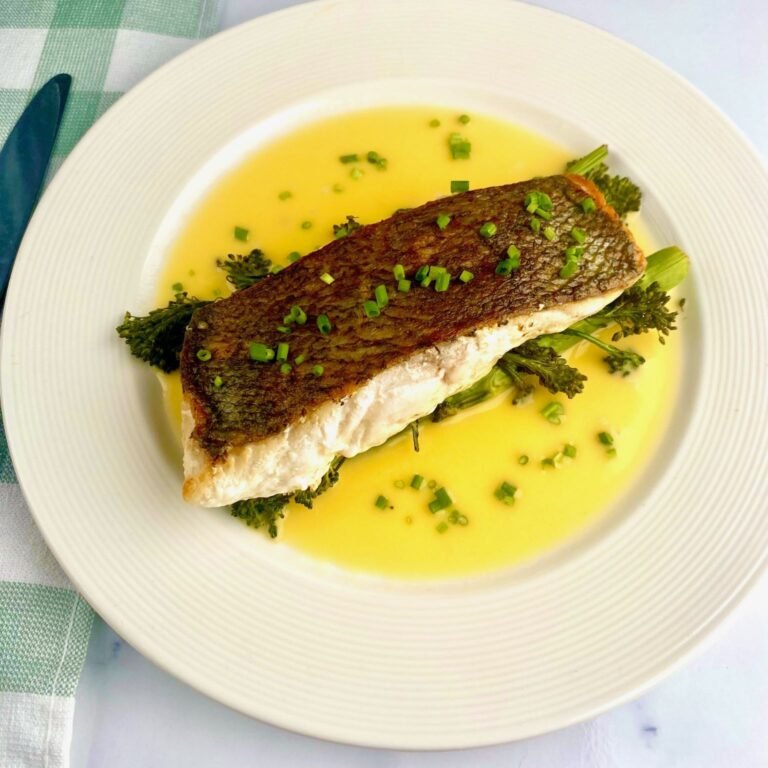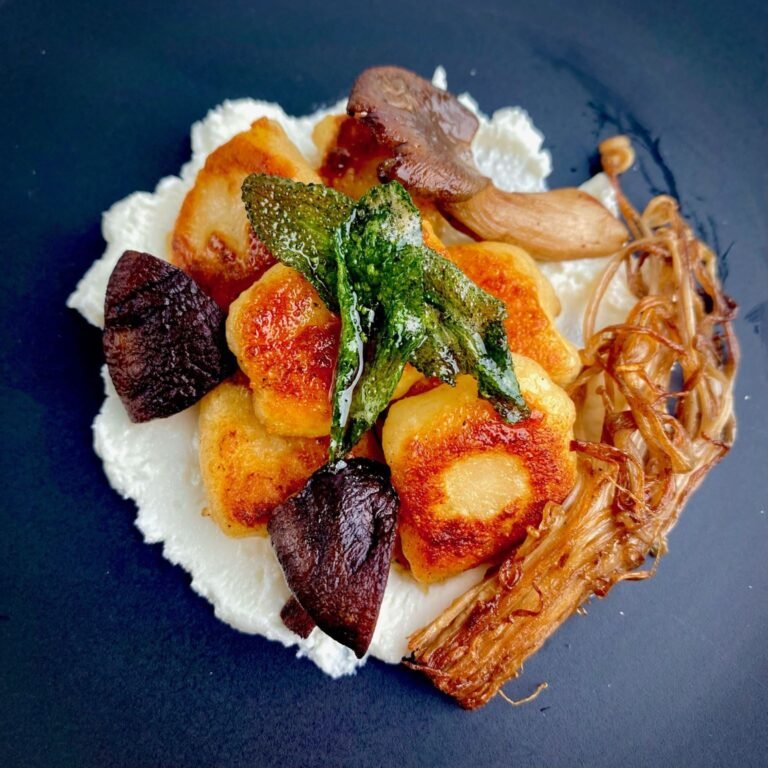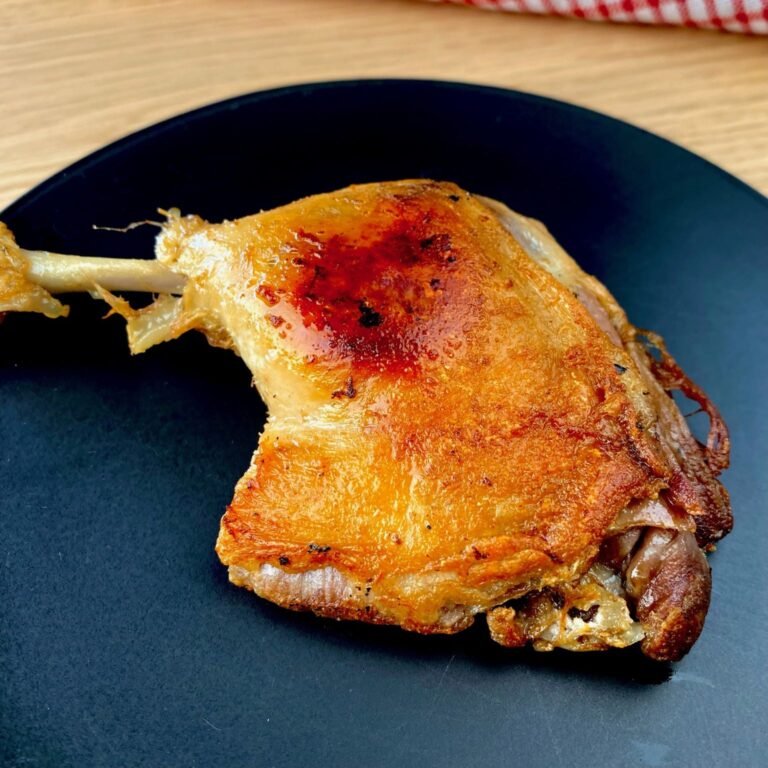How to Make a French Omelette
Sometimes in cooking it’s the simplest of dishes that turn out to be the most challenging. That could definitely be said for this dish. The classic French Omelette is a seemingly simple dish, consisting of whisked Eggs that are cooked to perfection in a pan and then served with some Salt and a sprinkling of fresh herbs. Easy right? The answer is yes! If your follow this recipe we’ll show you how to make a French Omelette that is perfectly cooked every time!
I think that when it comes to cooking simple dishes, they become the most challenging to master. Like Scrambled Eggs, they can easily be cooked, but can they be cooked perfectly? Therein lies the challenge. There are so many challenges when making an Omelette at home that truly differentiate it from being ‘just cooked’ to ‘perfectly cooked’
Inspiration for making this dish
My fascination with perfecting this dish came from a TV Show. I think it was a Top Chef or Masterchef episode. One of those shows anyway. I recall the challenge well, however. The guest host was the world-famous Austrian Chef Wolfgang Puck (who I’ve had the pleasure to meet once, and I can tell you he’s one of the nicest people I’ve ever had the pleasure of speaking to!)
Anyway, glazing aside, the challenge Wolfgang presented to the contestants was to make the perfect French Omelette. He gave them a handful of Eggs, some Butter, and some Salt. That was it. For what is seemingly such a simple dish to make, it was astounding how many different versions of the dish were presented to him from these trained chefs
Naturally, many of them were not up to his expectations, with many being overcooked, and some even broken up to the point they’d be better off served as Scrambled Eggs!

What are the characteristics of a perfect French Omelette
A perfectly cooked French Omelette will be incredibly delicate and light. When cutting into it, the Omelette will simply melt away with tenderness. The texture – almost like you are eating a cloud
The color must be a very light-yellow color, like the color of a Pineapple that is not yet fully ripened. There should be no distinctive charred marks on the Omelette, and the consistency of the color should be uniform across the entire Omelette
The filling should be just slightly runny, and definitely not overcooked. A perfect French Omelette will have a slight runniness when cut into. Not to the point where the Egg will ooze out onto the plate like a Poached Egg, but just enough for there to be a slight gooey texture
Finally, The Omelette needs to be in one piece. There shouldn’t be any overt breakages in the Omelette. It needs to be in one, uniform shape. So, when you think about it learning how to make a French Omelette the right way has loads of criteria for perfection!

How to make a French Omelette perfectly, every time
There are a couple of key steps you need to take to nail this dish every time. They’re all very easy, but like everything in cooking, it’s all about technique. First, grab 4 eggs and give them a decent whisk in a separate bowl or glass. You can use a whisk, or just a regular fork will do
Whisking the Eggs well (at least 1 minute), allows air to get into the Eggs. This will ultimately help with giving the Omelette a lovely, light texture once cooked. Whisking the Eggs well will also ensure a consistency in color. The last thing you want is to have bits of Yolk or Egg Whites not fully incorporated, as they’ll show up as different colors on the Omelette once cooked
The second technique is to cook the Omelette in a non-stick Pan
This is a big one. You want the cooked French Omelette to effortlessly glide out of the pan and straight onto the plate. This will ensure that the Omelette stays intact and doesn’t break. There’s a big risk of that occurring by lifting the Omelette out of the pan with a spatula. So, non-stick pan is much preferred
Load the Pan full of Butter and slowly melt it before adding the Eggs
The Butter goes into the pan first, before the Eggs. For 4 Eggs, our recipe requires 2 teaspoons of Butter. So, think of the ratio of 1 tsp. for every 2 Eggs and you’ll be fine. Also remember to use Unsalted Butter, which is what we always recommend in our dishes
Using Salted Butter will introduce Salt too early to the Eggs, which can begin to discolor them. You want to add Salt at the very end of the cooking process, right before serving. This ensures the color of the Eggs stays as natural as possible. Also, using Salted Butter makes it much more challenging to manage the level of seasoning in your cooking. So, Unsalted Butter please!

Cook the Eggs on a low temperature and move the Eggs around in the pan
This is the key technique required to getting the perfectly cooked Omelette without burning it. Eggs are challenging to cook, because they cook so quickly! You first need to cook them on a low temperature over the stovetop
If you feel the heat is getting too much in the pan, you can always remove the pan from the stovetop. The pan will still be warm, so the Eggs will continue to cook. It’s always better to cook Eggs slowly than quickly. Just avoid overcooking them
The challenge with an Omelette is that while the bottom and sides of the Eggs are cooking, the middle and top part of the Omelette isn’t. In order to ensure an even cook for all of the Egg in the pan, gently scrape the outsides of the Eggs into the center with a spatula. Do this will the Eggs are still runny and fresh into the pan. You’ll notice when you do this that the Egg from the center of the Pan will relocate to the edges, enabling them to cook
It’s a technique that may take some time to get the hang of
When doing this technique, you will begin to notice that the part of the Omelette you drag into the center of the pan will be partially cooked, and begin to form uneven surfaces in the pan. This a good thing! You’re essentially moving the cooked part of the Omelette to a section of the pan that won’t cook them further, while the uncooked pieces are re-allocated to the edges to cook
It’s a funny technique, but one that you’ll get the hang of pretty quickly once you start cooking. Once the Egg begins to cook throughout, no longer repeat this process. Remember, this process will only work if the Eggs are still runny. If you keep scraping the Eggs around the pan once they’re cooked, it’ll break up and turn into Scrambled Eggs

Once the Eggs are almost cooked, it’s time to fold
The most difficult step in making a perfect French Omelette is the folding and plating process. This is why it is essential you are using a non-stick pan, as we fold the Omelette over and on top of itself as it’s being plated in one motion
To complete this step, tilt the frying pan over a clean plate and begin to slide the Omelette out of the pan and onto the plate. Once half the Omelette is on the plate, carefully fold the remaining section on top of itself. Once you practice this technique a few times it’ll become easy, and you’ll work out how to get it right in the center of the plate
At this point, you’re all done! All there is left to do is season the Omelette with Salt and top it off with some freshly chopped Chives. The Chives are optional, but they do add a nice color contrast which helps the presentation from being one-note
If you want to get super-fancy, you can add some Parmesan Cheese right before plating
While a classic French Omelette consists simply of Butter, Eggs, and Salt, I like to add a little bit of Parmesan Cheese to the filling. It just tastes so good. Along with the delicious nutty flavors of Parmesan Cheese, you get a nice creaminess in the inside of the Omelette once it’s cut into
To add Parmesan to the dish, simply grate it generously over the center of the Omelette when it’s in the pan and ready to be folded out onto the plate. Remember, once the Omelette is plated the hot Eggs are still going to continue cooking. This is why we plate the Omelette when the Eggs are still slightly runny. So, while they are continuing to cook on the plate, it will also melt the Cheese
Recipe Details
1 person
5 minutes
5 minutes
10 minutes
How to make a French Omelette
Ingredients
- 4 Eggs
- 2 tsp. Unsalted Butter
- Pinch of Salt
- Optional: 1 tbsp. grated Parmesan Cheese
Instructions
- Whisk the Eggs well in a small bowl or cup until smooth (about 1 minute)
- Heat the Butter in a large non-stick frying pan over low heat. Once melted, pour the Eggs over the Butter
- While the Eggs are slowly cooking, drag the edges of the Eggs into the center, allowing the Eggs to pool into the open space you just created. Continue doing this process as the Eggs cook, allowing an even cook
- Once the Eggs are almost completely cooked and still slightly runny, carefully tilt the frying pan over a clean plate and slide the Omelette off the pan, onto the plate. Once half the Omelette is on the plate, fold the remaining Omelette over it to form it’s shape
- Season the Omelette with Salt and finish with freshly chopped Chives. Serve immediately
Recipe Notes
- If you want to add Parmesan Cheese to the Omelette, do so just before you slide the Omelette onto the plate. The cheese will cook on the inside of the Omelette while it is on the plate
- Practice makes perfect! Give this Omelette a few goes to master the technique of cooking and sliding it onto the plate
That is our recipe for how to make a French Omelette. For a dish that has so few ingredients it is deceptively challenging to master. Once you nail this recipe you can try adding all kinds of fun ingredients into your Omelette to add more unique flavors. Bacon and Mushrooms are always a good choice!
Here are more delicious Breakfast recipes of ours that we highly recommend you check out:
Happy Cooking!






